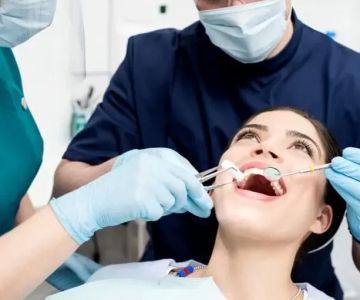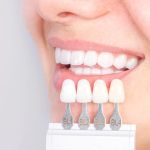What is a Dental Emergency?
A dental emergency is any dental problem that requires immediate attention. Not all dental issues are emergencies. However, if you have uncontrollable bleeding, severe pain that doesn't respond to medication, or broken facial bones, it's crucial to seek immediate dental care. Examples of dental emergencies include severe toothache, badly cracked tooth, knocked-out tooth, extruded tooth, dental abscess, lost or broken dental restoration, and severe soft tissue injury.
What to Do in a Dental Emergency
If you have a severe toothache, start by rinsing your mouth thoroughly with warm water and using dental floss to remove any trapped food. Apply a cold compress if your mouth is swollen and take over-the-counter pain relievers. For a badly cracked tooth, save and rinse the broken pieces, control the bleeding, and apply a cold compress. If your tooth is knocked out, handle it carefully by the crown, rinse the root, and try to reinsert it if possible. Otherwise, keep it in milk or a special solution and see your dentist promptly. In case of an extruded tooth, apply a cold compress and take pain relievers if needed. For a dental abscess, rinse your mouth with salt water and seek treatment promptly. If you have lost or broken a dental restoration, use temporary measures and see your dentist as soon as possible. For severe soft tissue injuries, control the bleeding and apply pressure with a salt-water solution or caffeinated tea bag. If the bleeding doesn't stop, see a dentist or go to the emergency room.
Managing Non-Emergency Dental Issues
There are also situations that aren't immediate emergencies. For instance, a dull or mild toothache, a small chip or crack in a tooth, broken braces, an object stuck between your teeth, or a minor soft tissue injury. But still, it's important to see your dentist as soon as possible. For a dull toothache, rinse your mouth and floss. For a small chip or crack, cover sharp edges with orthodontic wax if they are irritating. For broken braces, deal with poking wires and cover them with wax. For an object stuck between your teeth, try to remove it gently. For a minor soft tissue injury, rinse with a saltwater solution and apply pressure.
When to Go to the ER for Tooth Pain
If your dentist's office is closed and you have severe tooth pain, you should go to the nearest emergency room. The ER staff can provide medications to ease your symptoms, but they don't perform restorative treatments. You'll still need to see your dentist after receiving emergency care.
Temporary Relief Measures
While waiting for your dental appointment, there are several home remedies that can offer relief. Over-the-counter topical gels containing benzocaine can be applied to the painful area. Rinsing with warm salt water can soothe the pain, especially if it's due to a bacterial infection. Applying a small drop of clove oil or sucking on a whole clove can also help numb the area. Applying a cold compress to the outside of your face can reduce swelling. Non-steroidal anti-inflammatory medications like ibuprofen or acetaminophen can help reduce swelling and provide pain relief. Remember to follow the instructions and consult your doctor or pharmacist if you're on other medications.
Conclusion
Dental pain can be a major inconvenience, but there are various ways to manage it until you can see your dentist. Whether it's a severe emergency or a less urgent issue, taking the appropriate steps and using temporary relief measures can make the waiting period more bearable. Remember, prompt and timely treatment is key to preventing further complications and ensuring your oral health. So, stay calm, follow the advice provided, and get the professional dental care you need as soon as possible.




 Westgate Dental Arts
Westgate Dental Arts Coventry Family Dental
Coventry Family Dental Familia Dental
Familia Dental Dr. Daniel S. Fife, DDS
Dr. Daniel S. Fife, DDS Dentistry At Suburban Square: Michael I. Wollock, DMD
Dentistry At Suburban Square: Michael I. Wollock, DMD Comfort Care Dental
Comfort Care Dental The Importance of Oral Health Education During Pregnancy for a Healthy Pregnancy
The Importance of Oral Health Education During Pregnancy for a Healthy Pregnancy Why Skipping Dental Checkups Can Lead to Bigger Oral Health Problems
Why Skipping Dental Checkups Can Lead to Bigger Oral Health Problems Advantages of Porcelain Dental Restorations
Advantages of Porcelain Dental Restorations Best Tips for Brushing Your Teeth Properly for Healthy Gums: Essential Techniques for Oral Health
Best Tips for Brushing Your Teeth Properly for Healthy Gums: Essential Techniques for Oral Health How Can Diabetes Cause Tooth and Gum Problems? Preventing and Managing Oral Health Issues
How Can Diabetes Cause Tooth and Gum Problems? Preventing and Managing Oral Health Issues Healthy Habits for Promoting Good Oral Health and Hygiene: Tips for a Healthy Smile
Healthy Habits for Promoting Good Oral Health and Hygiene: Tips for a Healthy Smile